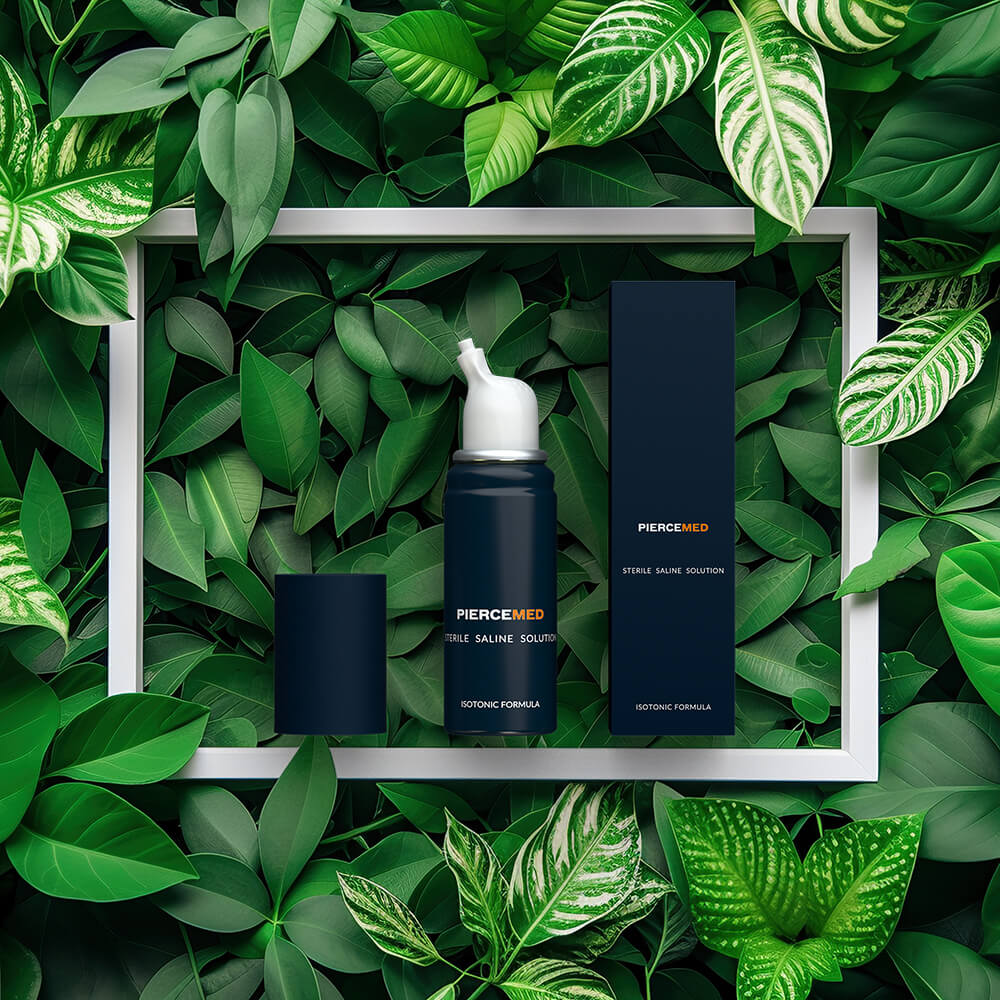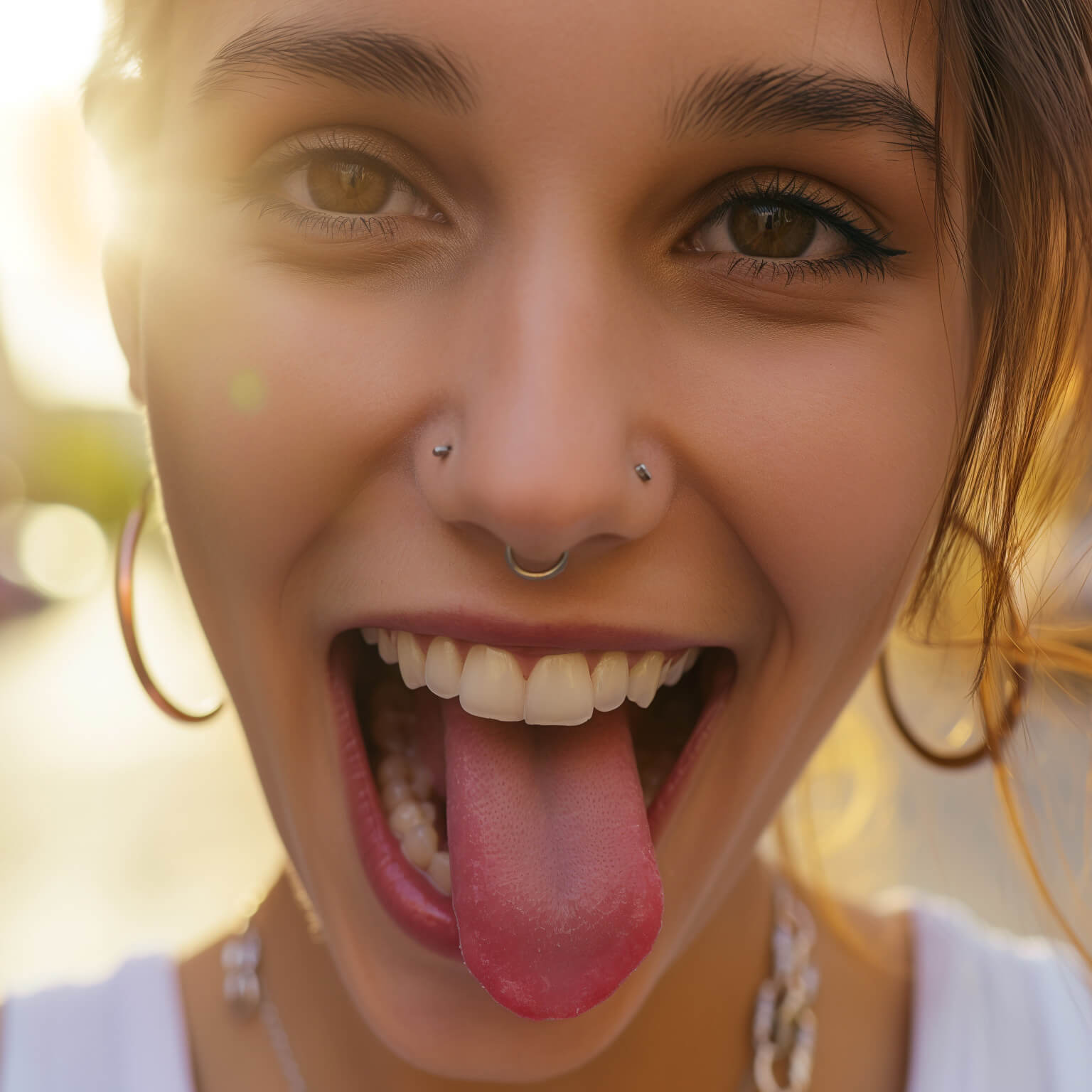The risks and considerations of getting a piercing during pregnancy and breastfeeding.
Pregnancy and breastfeeding are transformative periods in a woman's life, accompanied by unique physical and hormonal changes. These changes warrant careful consideration when it comes to decisions regarding one's health and well-being. One such decision is the choice to get a piercing during these sensitive phases.
Getting a piercing while pregnant or nursing is generally discouraged due to several reasons:
- Infection risk
- Impaired healing and recovery
- Breastfeeding concerns
- Potential allergic reactions
- Stress and discomfort
For those of you who require a more detailed understanding, continue reading.
This article explores the risks and important considerations associated with getting a piercing while pregnant or breastfeeding.
NOTE: Professional piercers are guided by a commitment to their clients' well-being. Their refusal to perform piercings during pregnancy or breastfeeding is rooted in a dedication to minimising potential risks and complications. Recognising the body's vulnerability during these phases, professional piercers prioritise the health of both the mother and the baby over any aesthetic or personal preferences. Their ethical stance aligns with healthcare best practices, ensuring that clients are provided with accurate information and guidance to make informed decisions that promote safety and optimal healing.
INFECTION RISK
During pregnancy, a woman's immune system undergoes modifications to accommodate the growing fetus. This can render her more susceptible to infections, including those resulting from piercings. The act of piercing introduces a wound, which increases the risk of infection. In case of an infection, the limited availability of safe medications during pregnancy or breastfeeding can complicate treatment.
There is a potential risk that an infection could be passed on to the infant if a piercing were to become infected. Infections can spread through contact with bodily fluids, and if the piercing site becomes infected, there is a possibility that harmful bacteria could be transferred to the baby during breastfeeding or close physical contact.
Infections that occur in the mother's body, including an infected piercing site, generally do not directly pass to the unborn baby through the placenta. The placenta acts as a barrier that helps protect the baby from most infections that the mother might experience.
However, certain severe infections, such as certain types of bacterial infections or viruses, can potentially cross the placental barrier and affect the developing fetus. These infections are relatively rare and are typically associated with specific diseases or conditions.
- HIV (Human Immunodeficiency Virus): HIV can be transmitted from mother to baby during pregnancy, childbirth, or breastfeeding.
- Hepatitis B Virus (HBV): HBV can be transmitted from an infected mother to her baby during childbirth.
- Hepatitis C Virus (HCV): While the risk of vertical transmission (from mother to baby) of HCV is lower compared to HBV and HIV, it is still possible.
These viruses have the potential to cross the placenta and infect the fetus. However, the likelihood of transmission varies based on factors such as the viral load of the mother, the specific virus, the stage of pregnancy, and the presence of any preventive interventions.
Some bacterial infections can be transmitted through breast milk. For example, if a mother has a bacterial infection like mastitis (inflammation of breast tissue) or a staphylococcal infection, there is a possibility that the bacteria could be present in the breast milk and transmitted to the baby.
Bacterial Infections and Breast Milk: While breast milk is generally safe and beneficial for babies, bacterial infections could potentially introduce harmful bacteria into breast milk. If a piercing site becomes infected, bacteria could enter the bloodstream and, in rare cases, reach breast tissue. This could potentially lead to localised infections such as mastitis, which might affect the quality of breast milk and could impact breastfeeding.
Viral Infections and Breast Milk: The transmission of viral infections through breast milk is possible but varies depending on the virus. Certain viruses, like HIV and HTLV-1 (Human T-lymphotropic virus type 1), have the potential to be transmitted through breast milk. Viruses like hepatitis B and hepatitis C, are less likely to be transmitted through breast milk, but not impossible.
The UKAPP provides an article: Breastfeeding and Piercing
IMPAIRED HEALING AND RECOVERY
Pregnancy and breastfeeding mark profound physiological journeys in a woman's life, characterised by intricate hormonal changes that orchestrate the development and sustenance of new life. These hormonal shifts play a pivotal role in various bodily processes, including metabolism, immune response, and tissue repair. It becomes crucial to comprehend how these hormonal changes can influence the body's response to the piercing process and subsequent healing.
Hormones and Healing: Hormones, often referred to as the body's chemical messengers, regulate a wide array of functions, including the body's natural healing mechanisms. During pregnancy, the body experiences elevated levels of certain hormones, such as estrogen and progesterone, which are essential for nurturing the developing fetus. However, these hormonal fluctuations can also influence the body's ability to heal effectively.
During pregnancy, the body prioritises resources to sustain and nurture the developing fetus, which can affect the body's ability to allocate resources for additional processes such as healing a new piercing.
Stressors on Breastfeeding: For women who are breastfeeding, the location of the piercing becomes particularly relevant. Nipple piercings, for example, can lead to discomfort and challenges during breastfeeding. The stress and discomfort associated with compromised breastfeeding experiences might impact both the mother's well-being and the baby's nourishment.
Piercing introduces a controlled wound, which triggers a cascade of events aimed at repairing and protecting the affected tissue. However, the body's altered priorities during pregnancy may impact the efficiency of this healing process. It's important to recognise that the body's healing capacity might be compromised due to the demands of pregnancy, potentially leading to prolonged healing times or increased vulnerability to complications.
Swelling and Bleeding: Hormonal shifts can influence blood circulation and vessel dilation, which are crucial for wound healing. During pregnancy, increased blood volume and circulation are necessary to support the growing placenta and fetus. However, this can also lead to heightened sensitivity, making the piercing site more prone to swelling and bleeding. Piercings in areas with greater blood flow may be particularly affected by these hormonal changes, potentially causing discomfort or complications.
Rejection and Migration: Another consideration in the context of hormonal changes is the potential for piercing rejection or migration. Piercing rejection occurs when the body perceives the jewellery as a foreign object and attempts to push it out. Hormonal fluctuations during pregnancy and breastfeeding could amplify the body's response to the piercing, increasing the risk of rejection. Moreover, migrating piercings, where the jewellery changes position within the body, may occur more frequently due to the altered tissue dynamics influenced by hormonal changes.
Breastfeeding Dynamics: Hormones also play a crucial role in breastfeeding, as they regulate milk production and flow. Piercings near the breasts, such as nipple or chest piercings, can interfere with the delicate balance of breastfeeding. Hormonal influences on milk ducts and nipple sensitivity can be disrupted by the presence of jewellery, potentially causing discomfort or difficulties in breastfeeding.
ALLERGIC REACTIONS
During pregnancy and breastfeeding the body undergoes a myriad of changes to support the growth and sustenance of new life. Understanding the intricacies of potential allergic reactions and sensitivities becomes essential to making informed choices that prioritise both maternal health and the well-being of the developing baby.
Altered Immune Response: Pregnancy triggers a series of changes in the immune system, affecting how the body responds to various stimuli, including potential allergens. The immune system's primary role is to defend the body against harmful substances, but during pregnancy, it is recalibrated to avoid rejecting the developing fetus. This recalibration can impact how the body reacts to new elements introduced into the system, such as metals commonly found in piercings.
Sensitivities and Sensitisation: Pregnancy can heighten the body's sensitivity to certain substances, making it more prone to developing allergic reactions. Substances that might have been tolerated before pregnancy could trigger sensitivities during this period. This is particularly relevant in the context of piercings, where some metals could elicit adverse responses due to heightened sensitisation.
Potential for Irritation: In addition to full-blown allergic reactions, the body's altered immune response might lead to heightened irritation at the piercing site. This irritation could manifest as redness, itching, or discomfort, even if a full allergic reaction does not occur. The body's increased reactivity during pregnancy and breastfeeding means that the piercing experience may differ from what one might expect outside of these phases.
Risk of Complications: Allergic reactions and heightened sensitivities can contribute to an increased risk of complications at the piercing site. This includes delayed healing, prolonged discomfort, and potentially increased vulnerability to infections. Given the body's unique state during pregnancy and breastfeeding, addressing complications becomes more complex, as the options for treatment and management may be limited to ensure the safety of both the mother and the baby.
STRESS AND DISCOMFORT
Pregnancy and the early stages of motherhood are profound chapters in a woman's life, marked by a rollercoaster of emotions and physical changes. These transformative periods bring about a multitude of stressors and discomforts that demand careful consideration when contemplating decisions that could impact both maternal well-being and the health of the growing baby. In the midst of these challenges, the prospect of getting a piercing introduces an additional layer of stress and discomfort.
The Emotional Landscape: Pregnancy and the postpartum period are times of immense emotional intensity. Hormonal fluctuations, combined with the anticipation of parenthood and the various demands of caregiving, can create a heightened state of emotional sensitivity. The decision to get a piercing introduces an additional variable that may contribute to emotional stress. Coping with the emotional nuances of a new piercing, such as pain, maintenance, and the potential for complications, can amplify the existing emotional rollercoaster.
Physical Discomfort: The physical toll of pregnancy and breastfeeding cannot be underestimated. Sleep disruptions, body aches, hormonal fluctuations, and the challenges of adapting to the demands of a newborn can result in pronounced physical discomfort. Adding a new piercing to the mix might exacerbate the body's response to these existing discomforts. Simple tasks like finding a comfortable sleeping position or nursing the baby can become more challenging with a fresh piercing, potentially compounding physical discomfort.
Healing and Adaptation: Piercings require healing time and ongoing care, which can demand additional physical and mental energy. During pregnancy and breastfeeding, the body is already engaged in an intricate dance of healing and adaptation to support the developing baby. Introducing the healing process of a new piercing might divert the body's resources and attention away from its primary focus, potentially prolonging healing times and contributing to feelings of physical strain.
CONCLUSION
In the delicate chapters of pregnancy and breastfeeding, the decision to undergo a piercing is not just about adornment; it involves a careful consideration of the potential risks and implications. The amalgamation of factors discussed, from altered immune responses and potential allergic reactions to the challenges of healing and heightened sensitivities, collectively build a compelling case against getting a piercing during these transformative phases.
The staunch stance of professional piercers in refusing to perform piercings during pregnancy or breastfeeding is a testament to their commitment to health and safety. Their refusal stems from an understanding of the complex physiological changes that occur during this time. By prioritising the avoidance of potential complications, these piercers underscore the paramount importance of safeguarding the well-being of both the mother and the developing baby.
The body's vulnerability during pregnancy and breastfeeding magnifies the risks associated with piercings. Infections, irritations, and difficulties in healing are not mere inconveniences but potential threats that can disrupt the delicate balance of these crucial periods. The ethical and responsible decision to defer piercings until after these phases exemplifies a conscious choice to prioritise the profound task of nurturing new life over personal aesthetic preferences.
Engaging in open dialogues with healthcare providers and professional piercers empowers individuals to make well-informed choices. These conversations blend medical expertise with a commitment to the art of piercing, ultimately guiding clients toward the path that best aligns with their health, safety, and the well-being of their baby.
The complexities of pregnancy and breastfeeding require a measured approach—one that respects the body's natural processes and acknowledges the sensitivities introduced during these times. By exercising patience and a deep sense of responsibility, individuals can navigate the nuanced territory of personal transformation while ensuring that the welfare of both mother and child remains paramount.

PIERCING AFTERCARE
Create your business account today, and gain access to our exclusive piercing aftercare products.
DISCLAIMER: THIS ARTICLE DOES NOT CONTAIN ANY FORM OF MEDICAL ADVICE
The content of this of this article, including but not limited to text, graphics, images, and other materials, is strictly for informational purposes. Nothing on this article is meant to be a replacement for medical advice, diagnosis, or treatment from a medical professional.
Before beginning a new health care regimen or with any questions you may have about a medical condition or treatment, always consult a medical expert first.
Never disregard medical advice or put off consulting a medical professional because of something you have seen or read on this page.



